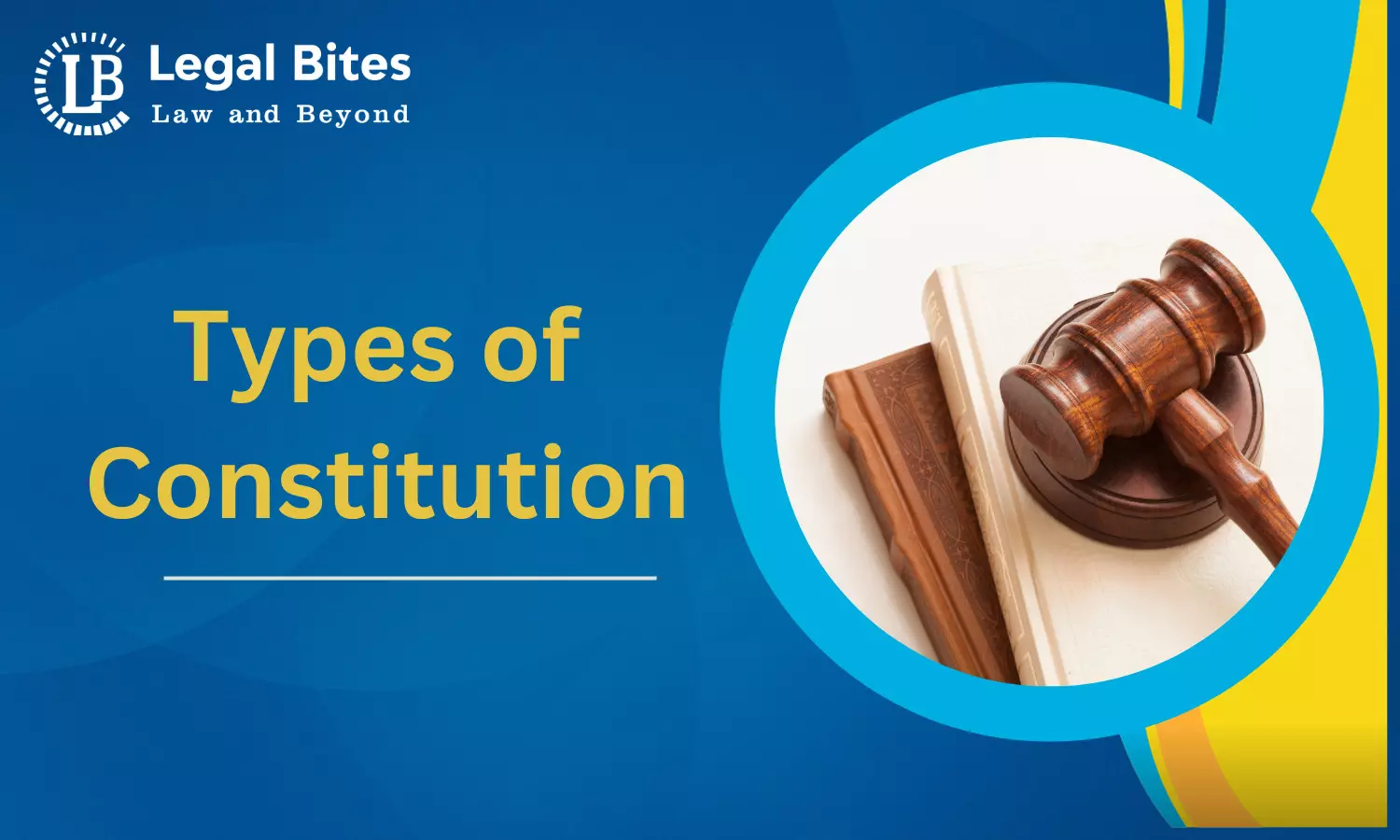Types of Constitution
The article 'Types of Constitution' delves into the multifaceted realm of constitutions, aiming to categorize and analyze the various types that exist globally.

The article 'Types of Constitution' delves into the multifaceted realm of constitutions, aiming to categorize and analyze the various types that exist globally.
Since national boundaries no longer define the scope of human existence, they are now as vast and unrestricted as the horizon, making the comparative study approach essential to all studies of human civilisations, accomplishments, and institutions. International understanding is facilitated by learning about the political and judicial systems of different nations. Legislature, executive, and judiciary are important components for the functioning of the state.
Introduction
A constitution sets forth a framework for governance, thus establishing the rule of law, stability and also ensuring the protection of individual liberties. The enactment of the Constitution in a Country serves as a blueprint for the smooth functioning of the state. The Constitution also emphasizes the system of checks and balances and it proves essential in preventing abuse of power and increasing accountability of the government and the citizens
What is Constitutional Law?
Constitutional law is the set of principles, practices, and regulations that control how political parties and the people of a country function. The state has historically been the most significant political community in modern times. The concept that the state must defend a person's fundamental rights and nationalism is shaped by a broader set of historical and philosophical influences The corpus of constitutional law has grown along with the number of states; however, occasionally this law has its roots outside of state borders. Conversely, since the middle of the 20th century, supranational institutions have made the defence of individual rights their top priority.
Comparative Constitutional Law: Importance
To understand and evaluate the diverse legal systems it is essential to know comparative constitutional law. There exist certain variations and commonalities in the principle, structure, and judicial interpretation of various countries and by comparison, it becomes easy to understand both the political and legal landscape. Thus, to address contemporary challenges, the comparative approach proves beneficial to adapt best practices. Human Rights, Democracy and the Rule of Law play a key role in the progress of just and equitable legal order on a global scale.
Types of Constitution
Broadly, there are two kinds of constitutions.
1) Written Constitution
A written constitution may be a formal record that diagrams the basic standards and rules of a country's government. It is ordinarily codified and can, as it were, be corrected through a specific method sketched out within the structure itself. Example: United States, India
2) Unwritten Constitution
Unwritten constitution is a set of ideas, rules, customs and traditions that help in order to govern that country. Example: United Kingdom, New Zealand
Other types of constitutions include rigid and flexible constitutions, A Rigid Constitution signifies that the process of amendment is not easy. In a flexible constitution, the procedures for making changes are typically less stringent, allowing for a more adaptable legal framework.
In a unitary constitution, there is a strong central government, and regional governments derive their authority from the central government. The United Kingdom is an example of a unitary constitution.
In a presidential system, the head of state and the head of government are separate, and the president is typically elected independently of the legislature. The United States is an example. In a parliamentary system, the head of government is typically the leader of the majority party in the legislature. The head of state may be a separate figure or a ceremonial role. Examples include the United Kingdom and India. In a monarchial constitution, the head of state is a monarch, either a king or queen. The extent of their powers can vary. In a republican constitution, the head of state is usually an elected official, and there is no hereditary monarchy.
Each sort of structure has its points of merits and drawbacks.
Conclusion
All Constitutions are different, regardless of whether written or unwritten, flexible or rigid, presidential or monarchical, republican or parliamentary, codified or uncodified. Moreover, their foundations lie in distinct historical settings that have given rise to disparate concerns and, consequently, priorities.
Constitution regardless of its classification safeguards against the misuse of authority, encouragement of the division of powers, application of the rule of law, and an appropriate system of checks and balances to ensure governmental control.
References
[1] What is a Constitution? Principles and Concepts, Available Here
[2] Types of Constitution, Available Here

